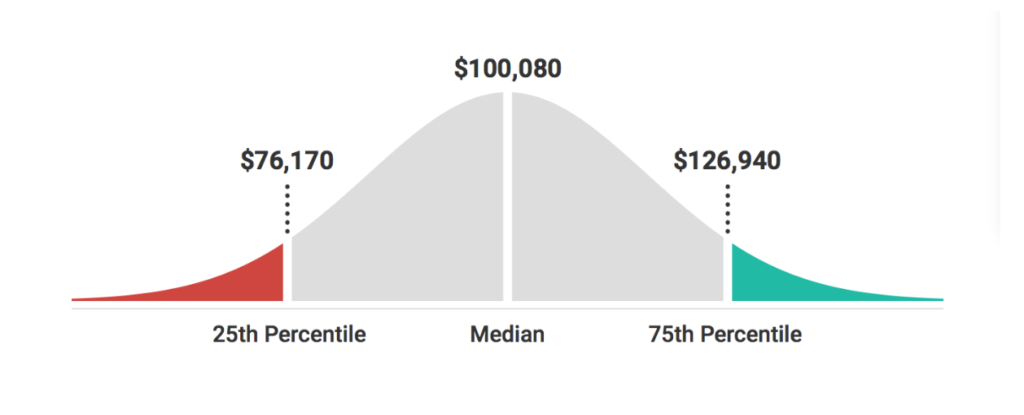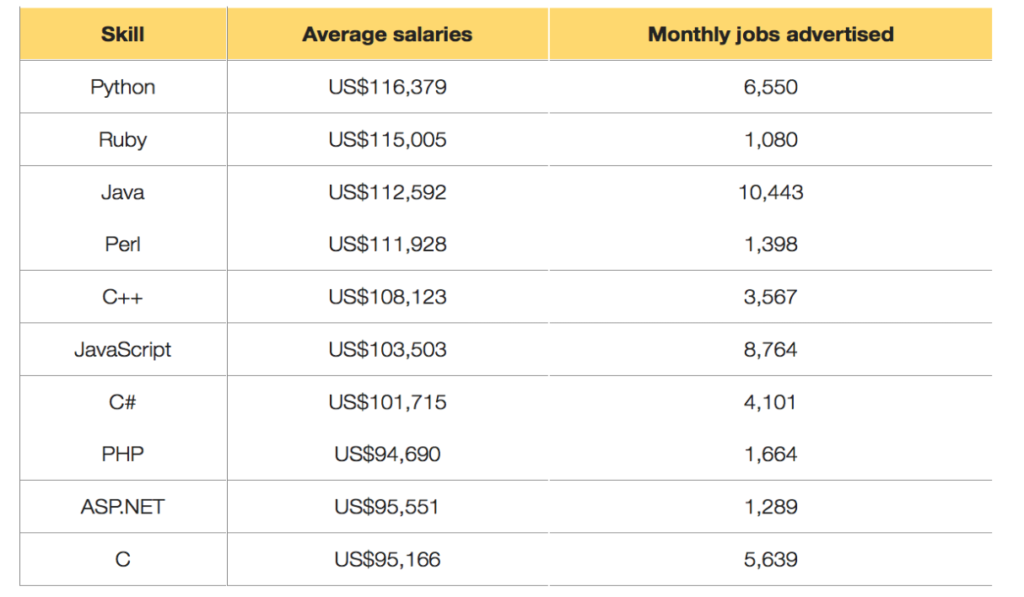
Have you ever wondered how your job opportunity looks from the perspective of a developer candidate?
Seamus Morse, a San Antonio-based programmer specializing in Python, can answer that question for you. Morse is on the hunt for a more flexible role after leaving a California-based company that required him to be on call one week per month.
Morse says the most important things to him when assessing work opportunities are salary, technologies and remote work options. He also prefers being able to utilize his own device on the job.
“It would be nice if recruiters addressed those things from the get-go,” says Morse. “It doesn’t even have to be a specific amount. If I get a message from a recruiter saying little more than ‘I have a really exciting opportunity for you!’ I’m not even going to reply to that.”
Morse isn’t alone when it comes to his sentiments about how vague recruiters are when they want to hire developers. Peruse online watering holes long enough, and you will find no shortage of programmers commiserating (and outright laughing) over bad cold emails.
However, once in a while, you will find comments like this:
“I welcome recruiters contacting me and even sometimes go to lunch with them to really get to know them better,” says hackNightly on Hacker News. “My opinion is that anyone out to find work for me is worth having in times like today.”
The key to becoming the kind of recruiter programmers rave about?
Care as much about potential candidates as you do your own to-do list. And that begins with understanding what matters most to the individuals you are contacting. This year, Stack Overflow polled more than 100,000 developers in the organization’s annual Stack Overflow Developer Survey.
While the survey posed a number of interesting questions — click here to read our recap — the most important from the perspective of recruiters was arguably: What do you prioritize most when evaluating job opportunities.
In this article, we’ll delve into the six most important factors considered by developers when assessing job offers. Look for opportunities where your organization can level up, stand out and do a better job of attracting high-caliber developer candidates:
Hire Better Developers by Evaluating Your Approach On 6 Job Factors
1. Compensation and Benefits
According to Stack Overflow, 18.3 percent of respondents listed compensation and benefits as their highest priority when evaluating job opportunities.
How does your salary package stack up against the competition? Unsurprisingly, compensation varies significantly by location, industry and languages used.
According to the U.S. Labor Department, the highest-paid 10 percent of software programmers earned $157,590 in 2016, while the lowest-paid earned $58,300. The median salary for a developer nationwide was $100,080.
 Programmers coding in Python make the most money on average, while those coding in PHP make the least.
Programmers coding in Python make the most money on average, while those coding in PHP make the least.
 **Chart redacted from DAXX: https://www.daxx.com/article/python-developer-salary-usa
**Chart redacted from DAXX: https://www.daxx.com/article/python-developer-salary-usa
As reported by U.S. News and World Report, the highest paid programmers work in the metropolitan areas of San Jose, Oakland and Seattle.
The states and districts paying developers the highest mean salary are Washington ($129,440), California ($120,710), Alaska ($119,120), New York ($113,120), and the District of Columbia ($112,040).
Which industries pay the best? Those would be the equipment manufacturing, securities, commodity exchanges, computer and peripheral equipment manufacturing, aerospace products and parts manufacturing verticals.
Expect wages to stay competitive as demand continues to outstrip supply. The U.S. Department of Labor predicts the software development field will add more than 250,000 jobs by 2026.
2. Language, Frameworks and Technologies
The second most important factor to developers evaluating job opportunities is the programming languages required by them.
While most programmers love a challenge, no one wants to be thrown into a work environment they have zero experience navigating. So, what is the most studied programming language?
“My UC Berkeley programming students often ask me which programming language is the most popular,” says David Gewirtz, ZDNet contributor and UC Berkley instructor. “It’s a simple question with a far-from-simple answer.”
Gerwitz advises his students to practice building things in multiple languages and frameworks, emphasizing the fact that programming is more than an intellectual exercise.
“Being comfortable in multiple languages and frameworks is important, because the computer industry is changing so much,” says Gerwitz. “What you learn today is probably not going to be enough for your entire career.”
Once an entry-level programmer has mastered the basics (i.e. C++, Java and JavaScript), he can usually pick up new languages fairly quickly. Think of a polyglot who learns his third language in half the time of his second; becoming proficient in code is no different.
Here is a summary of some of today’s most popular programming languages and the types of projects they support.
Java
Java is a well-established language that supports billions of devices around the world. A whopping 90 percent of Fortune 500 organizations use Java as a server-side language for backend development. All Android apps are also programmed using Java.
Python
Python increased in popularity by 5,000 job postings since 2017, according to TechRepublic. The language is most commonly used in scientific computing, data mining, and machine learning. As an increasing number of companies continue investing in Artificial Intelligence (AI), expect an increasing number of programmers to take up learning Python.
JavaScript
More than 80 percent of developers are proficient in JavaScript, according to Coding Dojo. Why? It’s arguably the most popular programming language in the world; more than 94 percent of all websites utilize the 20-year-old language in the form of interactive features and various applications.
C++
C++ is most commonly used for system/application software, game development, drivers, client-server applications and embedded firmware. Despite its reputation for being complex — most developers prefer to code in JavaScript or Python — C++ continues to be utilized by enterprise legacy systems.
C#
C# is an object-oriented programming language designed by Microsoft. The language has a ton of useful applications on .NET framework, Windows Runtime and ASP.NET web applications. C# is also widely used in video game development.
The biggest mistake we see recruiters make is reaching out to developers who aren’t proficient in the programming languages they need. At a minimum, ensure a potential candidate has mastered the basics before contacting them.
3. Opportunities for Professional Development
According to StackOverflow, approximately 16 percent of developers surveyed said professional development was their highest priority in evaluating new job roles.
Considering the rapidly evolving nature of today’s technological landscape, it’s no surprise a significant number of programmers value continuing education. Those who fail to learn new languages, frameworks and workflows risk getting left behind.
Of course, it isn’t just programmers who value professional development. An estimated 40 percent of poorly trained employees leave within their first year, according to the Dale Carnegie Institute.
What types of educational opportunities should your company be providing? Professional memberships, offsite events and workplace training programs are common as far as professional development benefits go.
A growing number of tech-savvy companies (e.g. RedHat, Cisco and Google) are also creating their own performance-based certifications as a way to upskill employees and increase retention.
“Hiring is expensive and time-consuming,” says Aaron Filous, CEO of Promotable. “It is often easier and cheaper to retain your own talent, or hire from within. Training or upskilling employees opens an additional talent pool for the employer that they already had.”
Another benefit to adopting stellar development programs? Participating employees often demonstrate increased loyalty, productivity and job satisfaction.
4. Company Culture
Nearly 15 percent of developers surveyed said they prioritized company culture above all else when evaluating job opportunities.
The term has become somewhat of a buzzword in recent years, ubiquitous with ping-pong tables, beer gardens and onsite snacks.
However, according to Investopedia, corporate culture refers to the beliefs that determine “how employees and management interact and handle outside business transactions.”
In other words, company culture is not something overtly expressed; it is implied in characteristics like employee benefits, office environment, dress code and client relations.
How do you know if your company has an exceptionally good culture? Simple — your team members look forward to showing up to work everyday.
Usually, that means their contributions are valued, they have friends at the office and they are reasonably challenged in their daily activities. It also means they feel good about what they are getting in exchange for the time they are putting in.
“Most programmers aren’t just looking for a gig to pay the rent,” says Joel Spolsky, CEO and cofounder of Stack Overflow. “They want to feel like their work has meaning… As a recruiter, your job is to identify the idealistic aspects of your company and make sure candidates are aware of them.”
Spolsky says young programmers are particularly keen on companies with ideological mission statements. Thus, businesses with products that benefit society will have an easier time marketing themselves to entry-level candidates.
What does your company represent? Does it champion any specific causes? How is it perceived in the community? The more confident you feel in answering these questions, the easier time you will have negotiating developer salaries and recruiting top candidates.
5. Remote Work Availability
Finally, approximately 10 percent of developer respondents listed remote work as their top priority when evaluating job opportunities.
What makes remote work so attractive? As Adam Kingl, director of learning solutions at the London Business School, told Fast Company:
“People want to take an afternoon off and catch up on Saturday morning.” With younger workers being fully aware that you can email or call someone from anywhere, the idea of working differently becomes “a criterion that people are expressly looking for before they’ll sign on the dotted line. It’s not a perk or reward.”
Depending on the study referenced, as much as 50 percent of the workforce is estimated to be working remotely by 2020.
As reported by eWeek, Dell wants half of its employees working remotely within the next two years. Many executives claim remote workforces save money, help the environment and enhance employee productivity. With that said, a significant number of companies remain skeptical of remote work.
What many fail to realize is that remote work doesn’t have to be “all or nothing.” For example, employees may work in the office two days a week and at home the rest of the time. Thanks to modern technology, and enterprise-messaging apps like Slack, remotely communicating project details with team members has never been easier.
If you’re a startup with a small budget, consider instituting flexible work schedules as a strategy for attracting top developer candidates.
________________________________________________________________________
AbilityScreen lets recruiters know exactly how candidates will perform on the job with 100 percent realistic emulations. The testing platform provides a ton of convenient features like self-scheduling, video playback and instant grading.
Click here to sign-up for a free trial now.
